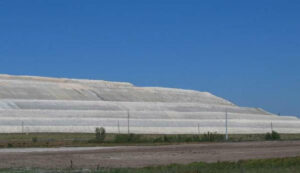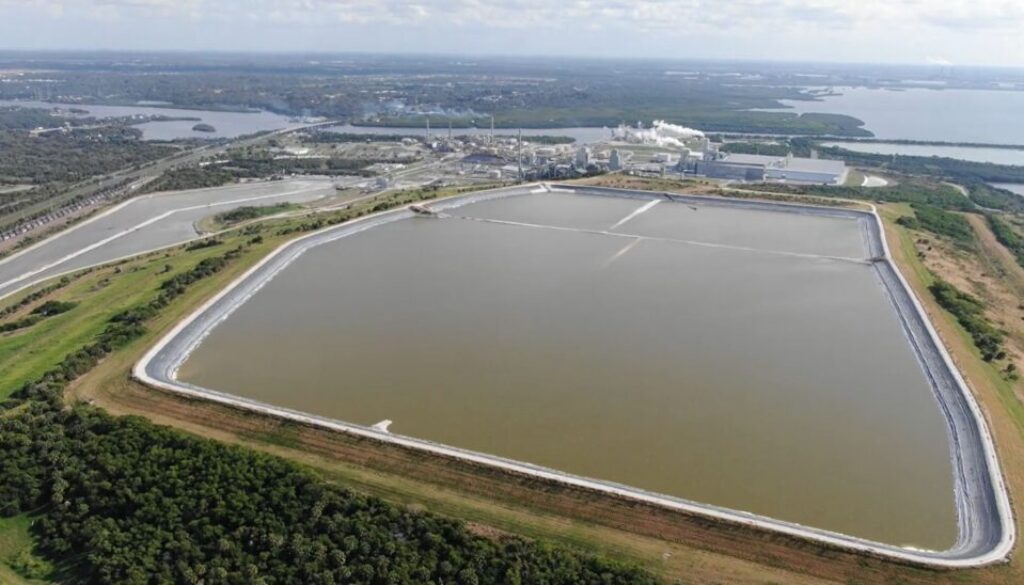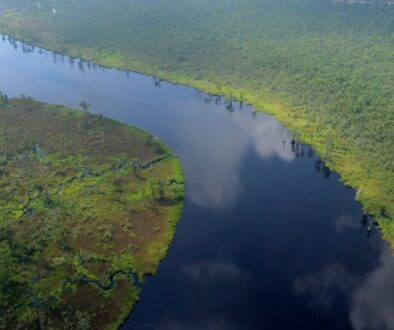Citing “toxic mountains,” conservation groups file notice of intent to sue EPA
US regulators are failing to address toxic “open-air dumps” that in some cases tower many hundreds of feet tall and hundreds of acres wide, according to a group of conservation and public health advocates who have filed a notice of intent to sue the government to force protective action.
The advocacy groups represent people in multiple states who live near the manmade dumps that store massive amounts of a radioactive substance called phosphogypsum, which is generated in the process of creating phosphoric acid for fertilizer. Phosphogypsum and its leachate can contain several hazardous substances, including arsenic, lead, cadmium, and chromium. These substances are considered carcinogenic and known to induce damage to multiple organs, even at lower levels of exposure, according to the National Institutes of Health.
Communities in Florida, Texas, Louisiana and other states are at risk from these dumps, according to the groups. There are four “Superfund” abandoned hazardous waste sites in Idaho, Illinois and Mississippi, where phosphate plants once operated.
The fertilizer industry creates 46 million tons of phosphogypsum each year, more than the amount of regulated hazardous waste produced in all other industries combined, according to the notice of intent to sue. In Florida, alone, there are more than one billion tons of phosphogypsum stored across 25 stacks, the groups say.
“The waste is not just toxic, it’s not just carcinogenic. It’s radioactive,” said Jaclyn Lopez, director of the Jacobs Public Interest Law Clinic for Democracy and the Environment at Stetson University, who is providing legal representation to the groups. Lopez recently authored a legal review finding that these plants are largely concentrated in low-wealth and minority communities across the United States.
“This has the potential to impact truly millions of people,” Lopez said.
“Massive waste burden”
Phosphorous is one of three key nutrients used in most fertilizers, along with nitrogen and potassium. The US is the world’s third-leading producer of phosphate, with most of the mining done in Florida.
Overall, just three large companies are responsible for dumping a “massive waste burden onto the public, stacking it up in mountainous open-air piles,” according to the notice of intent to sue.

As long ago as 1990, the Environmental Protection Agency (EPA) documented finding widespread groundwater contamination from phosphogypsum in Florida, but in 1991, the agency decided to exempt waste from phosphorous mining from being classified as hazardous materials because it would be too costly for fertilizer companies, according to EPA.
The conservation organizations preparing to sue EPA have been petitioning the agency for the last few years to initiate a rule-making process to designate phosphogypsum and process wastewater as hazardous wastes, which would be subject to a host of regulations and restrictions. Citing members who live in “communities within the shadows of these toxic mountains,” the organizations warn that in the absence of adequate regulation over the health and environmental risks associated with the waste stacks, the fertilizer industry is pursuing dangerous “additional – not alternative – disposal methods into roadways and aquifers.”
Those concerns about environmental risks have proven out in several areas. In Florida, Tampa-based fertilizer company Mosaic, the largest producer of phosphorous, reported last year that its New Wales phosphate plant appeared to suffer a tear in the liner designed to keep waste from escaping. The plant also had a sinkhole in 2016, dumping 215 million gallons of polluted water in a Florida aquifer. .
Mosaic, which did not respond to a request for comment, has recently asked the EPA for permission to test the application of phosphogypsum to roadbeds to see if that would be a better use of the material than storing it in stacks. The EPA is currently reviewing that use.
Dangers demonstrated
Since the 2021 petition filed by the conservation groups, the dangers of the phosphogypsum waste stacks have been well demonstrated, according to Ragan Whitlock, a staff attorney at the Center for Biological Diversity, one of the groups bringing the lawsuit.
In March 2021, a partial dam failure near Tampa led Florida officials to release 215 million gallons of toxic waste into Tampa Bay to help prevent the reservoir from collapsing. The waste included water laden with phosphogypsum and at least 186 tons of nitrogen, contributing to killing at least 1,600 tons of fish and other marine life, including 30 federally endangered Florida manatees, according to researchers at the University of South Florida.
Jen Lomberk, executive director of Matanzas Riverkeeper, another of the groups bringing the legal action, said she was hoping the dam disaster would be a wake up call for regulators, but their lack of action made a lawsuit even more necessary.
“We were really hoping to see our federal government and state government step up,” Lomberk said. “They didn’t.”
The other groups bringing the action against EPA include People for Protecting Peace River, Bayou City Waterkeeper, Healthy Gulf, Sierra Club, and Waterkeeper Alliance.
The EPA declined to comment, citing pending litigation.
(Featured image is of a phosphogypsum stack in Riverview, Florida. Photo by Sarah Gledhill, courtesy of the Center for Biological Diversity.)
 EWG
EWG


